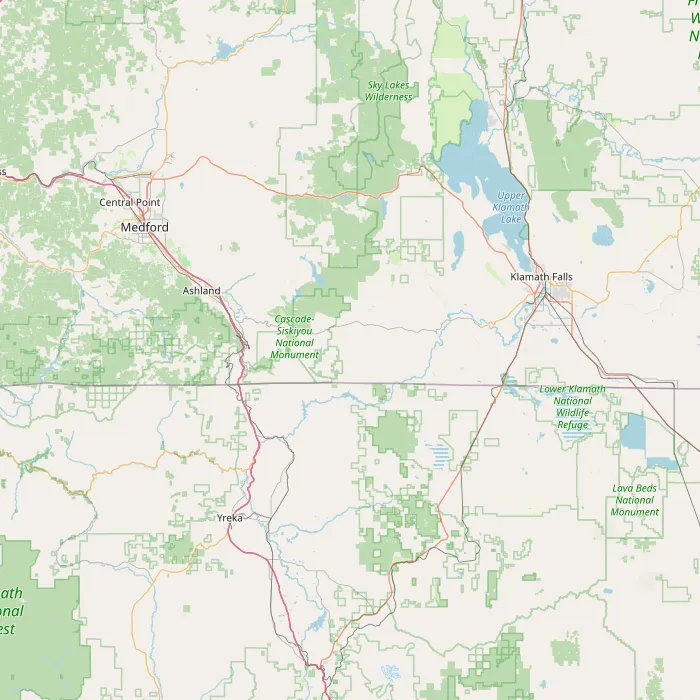Ashland, Oregon, is a gem nestled in the heart of Southern Oregon, known for its vibrant arts scene, stunning natural beauty, and the world-renowned Oregon Shakespeare Festival. A crucial element shaping the experience here is the unique Ashland Oregon Climate. Understanding the distinct seasons isn’t just about packing the right clothes; it’s about knowing when to visit for specific activities, from hiking the Siskiyou Mountains to enjoying a crisp autumn wine tasting. The climate dictates the rhythm of life and the pace of travel in this charming town, offering a different flavor with each changing season.
The climate in Ashland can generally be described as Mediterranean-like, featuring warm, dry summers and cool, wet winters. Located in the Rogue Valley, it benefits from a somewhat sheltered position, though it is still subject to the influences of the Pacific Northwest weather patterns. This creates a dynamic environment throughout the year, making Ashland a destination that transforms dramatically from one season to the next, each offering unique opportunities for exploration and enjoyment.
Understanding the Ashland Oregon Climate Across the Seasons
The distinct four seasons are a defining characteristic of the Ashland Oregon Climate, each presenting its own set of opportunities and challenges for visitors. Planning your trip around the seasonal weather can significantly enhance your experience, ensuring you catch the town at its most vibrant for your specific interests, whether they lie in outdoor adventures, cultural events, or simply soaking in the local atmosphere.

Knowing the typical weather patterns helps in deciding when to visit for hiking, when the festival season is in full swing, or when you might enjoy a cozy, rainy day indoors exploring local shops and cafes.
 Map showing locations of weather stations near Ashland, Oregon used for climate analysis
Map showing locations of weather stations near Ashland, Oregon used for climate analysis
Spring’s Gentle Awakening
Spring in Ashland, generally from March to May, is a time of gentle transition. Temperatures begin to rise, ranging from the 40s to 60s Fahrenheit (approx. 4-15°C). The landscape awakens, turning lush green as wildflowers start to bloom. While rain is still frequent, sunny days become more common, making it perfect for exploring the numerous trails around town and in the surrounding hills without the heat of summer.
Discover the Best Overnight Summer Camps in Texas
Your Ultimate Guide to Oktoberfest Los Angeles 2024
Discover the Best Things to See in Sarasota
This season is ideal for hikers and nature lovers. The trails in Lithia Park become particularly beautiful, and the air is crisp and clean. It’s also when the Oregon Shakespeare Festival begins its long season, adding a cultural layer to the natural beauty. The city feels fresh and alive, offering a peaceful yet invigorating experience before the peak summer crowds arrive.
Summer’s Warm Embrace
Summers in Ashland, from June through August, are typically hot and dry, embodying the core of the Mediterranean influence on the Ashland Oregon Climate. Daytime temperatures often soar into the 80s and 90s Fahrenheit (approx. 27-32°C), sometimes exceeding 100°F (38°C). Rainfall is minimal during these months. This is peak season for tourism, largely driven by the Oregon Shakespeare Festival.
The warm weather is perfect for enjoying outdoor performances, dining al fresco, and spending time by the Rogue River. However, visitors should be prepared for heat, especially in July and August, and stay hydrated. It’s also important to be aware of the potential for wildfire smoke during late summer, which can occasionally impact air quality. Despite this, the long, sunny days offer ample opportunity for enjoying all that Ashland has to offer.
Autumn’s Vibrant Palette
Autumn, from September to November, is arguably one of the most picturesque times to experience the Ashland Oregon Climate. The heat of summer subsides, bringing pleasant temperatures typically in the 50s to 70s Fahrenheit (approx. 10-21°C). The dry conditions usually persist into September, with rain becoming more frequent as November approaches. The most striking feature of fall is the spectacular display of fall foliage throughout Lithia Park and the surrounding areas.
This season coincides with the grape harvest in the nearby Rogue Valley wine region, making it a fantastic time for wine tasting and scenic drives. The crisp air and vibrant colors create a romantic and visually stunning backdrop for exploring the town and its surroundings. It’s a favorite time for many locals and repeat visitors, offering a balance of comfortable weather and breathtaking scenery.
Winter’s Cozy Charm
Winter in Ashland, from December to February, is cool and wet. Temperatures generally range from the 30s to 50s Fahrenheit (approx. 0-10°C). While snow is less common in the valley floor itself, it does happen and can dust the town with a beautiful layer of white. Snow is more prevalent at higher elevations, particularly on nearby Mount Ashland, which becomes a destination for skiing and snowboarding.

The winter season in Ashland offers a different kind of charm. The town slows down slightly, providing a cozier, more intimate atmosphere. It’s a great time to enjoy indoor activities like visiting art galleries, catching a play (OSF still has shows running), or simply relaxing by a fireplace in a local inn. The crisp air and potential for snow create a serene, peaceful environment, perfect for a relaxing getaway.
How Climate Shapes Ashland Experiences
The Ashland Oregon Climate plays a pivotal role in shaping the available activities and overall vibe of the town throughout the year. Summer heat is synonymous with outdoor performances and cooling off by the creek, while the mild spring and fall are ideal for hiking and biking. Winter’s chill brings people indoors to enjoy the rich cultural scene and local culinary delights.
Local agriculture, particularly the vineyards and orchards of Southern Oregon, are deeply tied to the climate cycles. This influences the farm-to-table movement popular in Ashland’s restaurants, with menus reflecting the seasonal availability of produce, berries, and grapes. Even historical interpretation can touch upon how early settlers adapted to the regional weather patterns.
Planning Your Visit Based on Ashland Oregon Climate
When planning your trip to Ashland, consider what activities are most important to you and align them with the typical weather patterns. For peak Oregon Shakespeare Festival events and warm outdoor fun, summer is the key. For hiking and vibrant natural beauty without the heat, spring and fall are superb. If you enjoy a quiet, cozy atmosphere and potential snow activities nearby, winter is your season.
Always check the specific forecast closer to your travel dates, as weather can be variable. Packing layers is a good strategy for any time of year, especially during the shoulder seasons. Being mindful of typical conditions allows you to make the most of your time in this beautiful Southern California town (Correction: Ashland is in Southern Oregon, but borders Northern California; the data source mention clarifies the connection).
Frequently Asked Questions About Ashland Oregon Climate
- What is the best time to visit Ashland for good weather?
Spring (April-May) and Fall (September-October) generally offer the most pleasant temperatures and beautiful scenery for outdoor activities and exploring the town comfortably. Summer (June-August) is hot but ideal for the Shakespeare Festival and river activities. - Does it snow in Ashland, Oregon?
Yes, it can snow in Ashland, particularly a few times during the winter months (December-February). However, significant accumulation on the valley floor is less frequent than in the surrounding mountains, like Mount Ashland. - How hot does it get in Ashland during the summer?
Summer temperatures frequently reach the 80s and 90s Fahrenheit (27-32°C) and can occasionally exceed 100°F (38°C) during heatwaves, especially in July and August. - Is wildfire smoke a common issue in Ashland?
Wildfire smoke can be an issue in late summer (August-September), depending on fire activity in Oregon and Northern California. Air quality can vary day by day during this period.
Conclusion
The Ashland Oregon Climate is an integral part of its identity, influencing everything from the landscape and local produce to the calendar of events and the daily rhythm of life. Whether you seek the vibrant heat of summer, the colorful transition of autumn, the gentle renewal of spring, or the quiet charm of winter, Ashland offers a unique experience tailored to the season. Understanding the climate helps you connect more deeply with this special place and plan a visit that perfectly matches your desired adventure.
